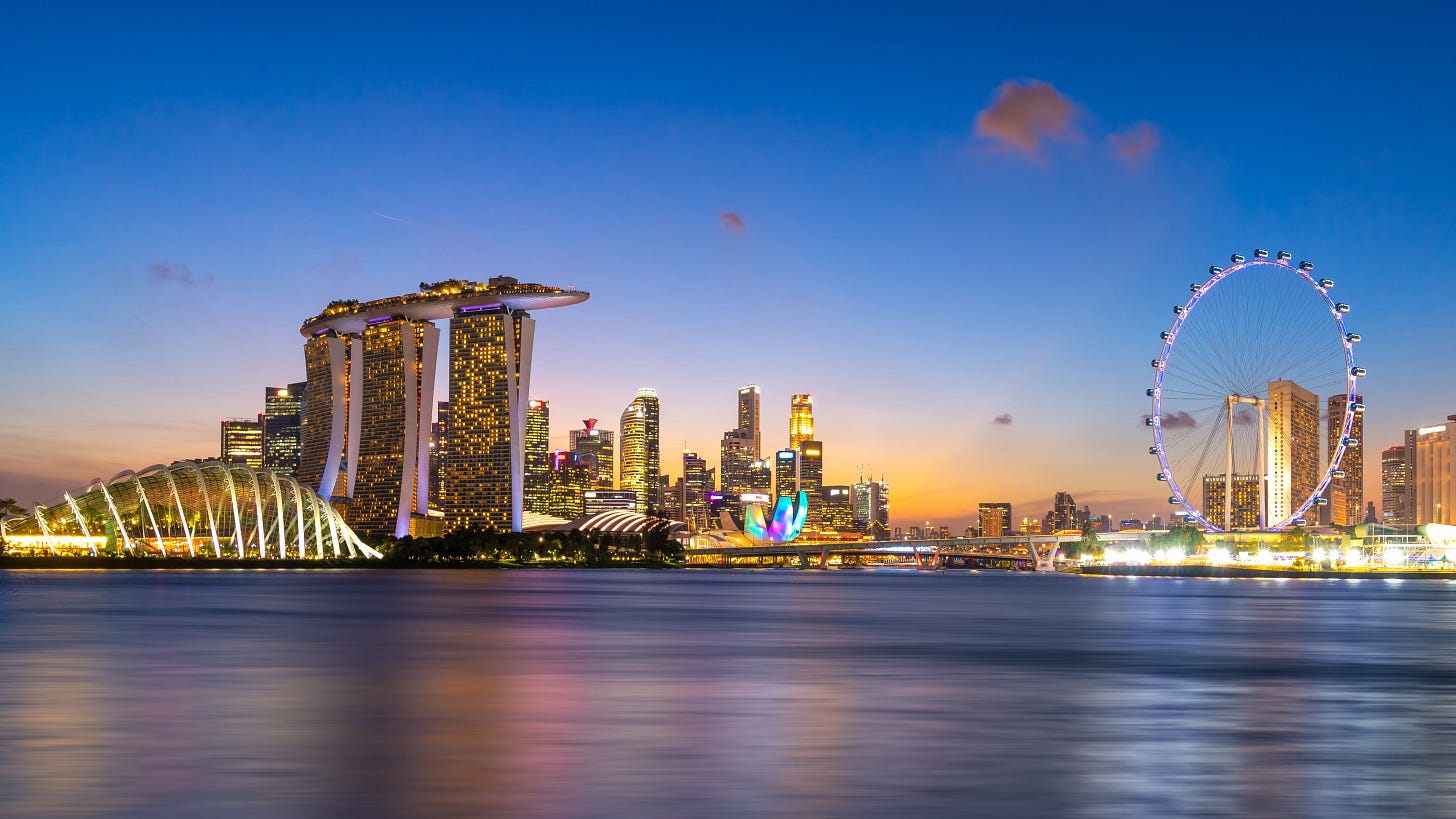9 August 1965 – Singapore’s Accidental Independence
How a reluctant split from Malaysia created one of the world’s most unlikely success stories
I was born in 1981, long after Singapore had found its place in the world. Growing up, I knew it as a place of glass towers, spotless streets, and economic strength. But when I started digging into its history, I was stunned to learn that it was never meant to be an independent country at all. On 9 August 1965, Singapore was not liberated or seized. It was expelled.
Malaysia had shown it the door. And with that, Singapore was on its own.
The Merger That Was Meant to Be
After gaining independence from Britain in 1959, Singapore’s leaders believed its future lay in merging with Malaysia. They shared geography, culture, and trade links. More importantly, Singapore lacked natural resources and space, while Malaysia offered a broader economic base. In 1963, after a public referendum, Singapore joined the Federation of Malaysia.
But from the beginning, the partnership was uneasy.
There were deep tensions around race, politics, and economics. Malaysia’s majority population was Malay, while Singapore had a large Chinese majority. The Malaysian government wanted to promote special privileges for Malays under its policy of “Bumiputera” or “sons of the soil,” while Singapore's leadership, particularly Prime Minister Lee Kuan Yew, promoted a vision of multiracial equality.
Clashes were inevitable.
A Partnership Unravels
The friction between the two governments became increasingly public. Singapore’s People's Action Party (PAP) challenged racial policies at the federal level, which was seen as a threat to the Malaysian ruling coalition. In return, Malaysian leaders feared that Singapore’s economic growth and multiracial politics would upset the balance of the federation.
Riots erupted in 1964, driven by ethnic tension and political provocation. Hundreds were injured. The fragile dream of unity was cracking under pressure.
Behind closed doors, discussions became confrontational. Trust had evaporated. On 7 August 1965, Malaysian Prime Minister Tunku Abdul Rahman proposed the unthinkable — Singapore should leave.
And two days later, it did.
The Separation Becomes Official
On 9 August 1965, the separation agreement was signed. Singapore was out of the federation. Parliament passed the necessary amendments, and the island became an independent republic. There was no celebration. No flags waved in triumph.
Singapore’s founding Prime Minister, Lee Kuan Yew, addressed the nation on television. His voice shook. He paused often, wiping tears from his eyes. This was not a victory speech. It was a man coming to terms with the weight of unwanted independence.
“For me, it is a moment of anguish,” he said. “All my life, my whole adult life, I believed in the unity of the two territories.”
And now, they were apart.
A Nation Begins Again
Singapore’s independence was born out of necessity, not ideology. It was a city without a hinterland, a trading post without a nation. It had no army, no fresh water supply of its own, and no natural resources to speak of. Few gave it a chance.
But this is where the story turns.
What followed was one of the most astonishing transformations in modern history. Lee Kuan Yew and his government poured energy into education, housing, infrastructure, and anti-corruption reforms. They attracted foreign investment, built world-class ports and airports, and turned the tiny island into a global business hub.
By the time I was old enough to read about Singapore, it had become a symbol of modernity. Efficient, clean, wealthy, and respected. It had grown into something even Malaysia could admire.
The Role of Leadership
One cannot talk about Singapore without talking about Lee Kuan Yew. He was not perfect. His government limited press freedoms, suppressed opposition, and ruled with a firm hand. But he also delivered stability, growth, and a sense of national pride.
He took a moment of despair and turned it into a platform for reinvention. He refused to let Singapore become a footnote. His focus on meritocracy, pragmatism, and long-term planning became the template for many developing nations.
When I listen back to that speech he gave on 9 August 1965, I hear not just sadness, but resolve. A recognition that the road ahead would be difficult, but not impossible.
Lessons from Singapore’s Exit
There are so many lessons wrapped inside Singapore’s independence. That forced beginnings can still lead to greatness. That unity, however well intended, cannot succeed without trust and equality. That small countries can play big roles when their people are focused and their leadership clear-eyed.
I think of other regions and places that are divided by politics, history, and culture. I think of places still fighting to find their voice. And then I look at Singapore — thrust into the world alone, not by choice, but by circumstance — and I see what determination can achieve.
Its path was not free of controversy. But the results are plain for all to see.
A British Legacy, Rewritten
As someone from the UK, it is impossible to ignore the colonial backdrop to this story. The British left behind divided lands, mixed populations, and blurred identities. Singapore's original inclusion in Malaysia was partly a reaction to that colonial hangover.
The British withdrawal from the East was never clean. Former colonies were left to manage identity, power, and borders with very little help. What Singapore shows is that even within that chaos, a new story can be written.
Final Thoughts
On 9 August 1965, Singapore was not meant to become a country. It was told to leave, cast off from a federation it had hoped to help shape. It was a painful moment, filled with uncertainty.
But it turned out to be the beginning of something remarkable.
Singapore’s story reminds us that independence can come not with a bang, but with a whisper. That being unwanted does not mean being unable. And that history does not always follow a script.
Sometimes, it writes a better one.


